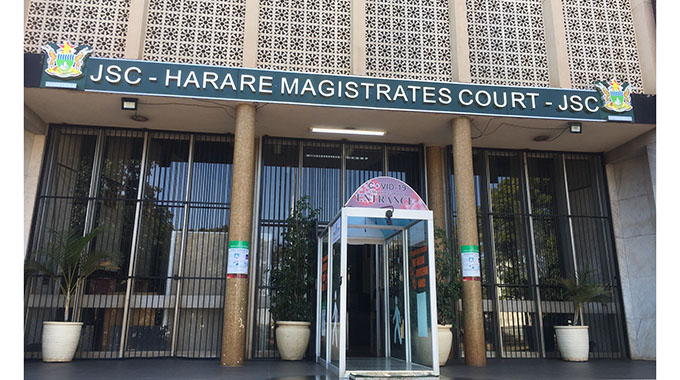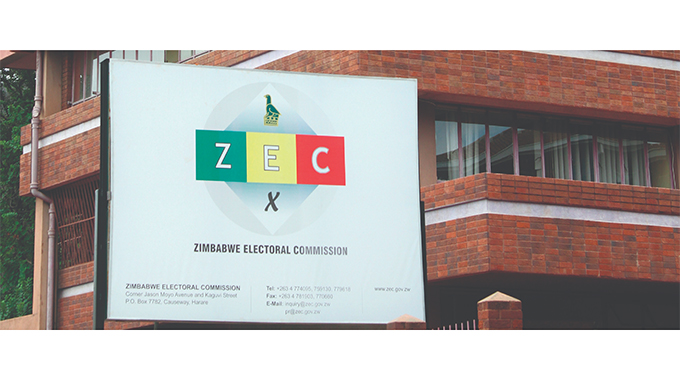Illusions of Rhodesia: Colonial Lazarus is dead, remains buried
Elliot Ziwira
Senior Writer
Illusions are stubborn. It is in their nature to take over reality.
No matter how much some colonially-ensconced midgets, dwarfed in their borrowed robes, may try to resurrect him through wish-mongering for a bygone era of purported bliss, colonial Lazarus is dead, and remains so.
Ian, “witch,” sorry, which Smith?
Like most Rhodies, Ian Smith had an illusion, that of Rhodesia. He expressed this delusion when he vowed that there would never be majority rule in his lifetime, that of his children and grandchildren (never in a thousand years, he believed).
This illusion was created by Cecil John Rhodes, who gave them the name Rhodesia, and his so-called Pioneer Column.
On November 11, 1965, Smith even declared his Rhodesia independent of the colonial master, Britain, which earned the country a backlash through sanctions.
As Doris Lessing writes in “African Laughter: Four Visits to Zimbabwe” (1992), Rhodesians believed that “Salisbury, a white town, British in feel, flavour and habit,” was theirs for keeps, because “the conquered were inferior, that white tutelage was to their advantage, that they were bound to be the grateful recipients of superior civilisation”.
What a dream!
For close to a century, Rhodies lived the dream that Rhodesia was their country, a European nation begotten on conquest of a “barbaric” people, devoid of history, culture and customs.
However, Smith and his band of Rhodesians soon realised that it was possible to reduce a thousand years to a mere 14.
Fancying themselves invincible and superior, Rhodesians closed out the indigenous owners of the land from the milk and honey enclosure of their ancestral heritage.
Settlers had the cheek to compose songs to celebrate their invincibility. One of such songs is “Rhodesians Never Die” by Clem Tholet and Andy Dillon, which has the following lines:
We’re all Rhodesians
We’ll fight through thick and thin,
We’ll keep our land a free land
Stop the enemy coming in,
We’ll keep them north of the Zambezi
Till that river’s running dry,
And this mighty land will prosper
For Rhodesians never die . . .
We’ll preserve this nation
For our children’s children,
Once you are a Rhodesian no other land will do,
We’ll stand tall in the sunshine
With truth on our side . . . (Julie Frederikse in None But Ourselves, 1990:51)
The song became the equivalent of a national anthem in Rhodesia. It yearns for the preservation of the Rhodesian nation “through thick and thin”.
It is this obstinate declaration on the part of Rhodesians to keep “their” land “a free land” that plays havoc on the post-colonial nation state of Zimbabwe.
The word “land” recurs throughout the song. What this means is that all humanity’s dreams can only become tenable if the source of livelihood is understood in terms of the land, among other major subsistence resources.
Rhodesians would rather take care of the land and its wildlife than consider the livelihoods of Africans — the true owners of the land. Rhodesia was theirs, it was their land.
They would rather protect animals and allow them to roam freely in massive swathes of arable land than allow black people to use the same.
Africans were packed in reserves, in what they (whites) derogatorily called “kraals”.
And, to counter that blacks in their wisdom composed their own songs to give impetus to the struggle for the Motherland.
Whereas whites were for the preservation of an illusion, blacks were struggling for the reclamation of what was rightfully theirs.
Africans were fighting for equality, against repressive laws that were at the centre of their suffering, as they robbed them of their humanity.
White Rhodesians saw it as a bush war, whereas to the people of colour it was a struggle for freedom; an inevitable struggle for their humanity, where violence was the only way out.
Fanon (1967) points out that, “Colonialism is not a thinking machine nor is it a body endowed with reasoning faculties. It is violence in its natural and absolute state and it will only yield when confronted with greater violence.”
He maintains: “National liberation, national renaissance, the restoration of nationhood to the people, commonwealth: whatever may be the headings used or the new formulas introduced, decolonisation is always a violent phenomenon.” All else having failed, the subjugated people of colour saw the elixir in violence. The need to fight to the bitter end reprised itself in collective struggle.
With oppressive machinery in their favour, Rhodesians had an upper hand.
There had to be a way of circumventing censorship and Rhodesian spy networks. United by their quest for liberation, their cultural norms and values as enshrined in their land; the land of their forefathers, black people envisioned a new nation, the nation of Zimbabwe.
They knew it existed somewhere in the not so distant horizon of their dreams; what they only required was to be shown the way to that nation.
Situating Rhodesian-ness
The colonial legacy is linked to Rhodesian-ness, and Rhodesian-ness equates to whiteness.
Zimbabwe has been burdened by conflicting nationalisms in existence since 1890; Black Nationalism and White Nationalism, which continue unabated.
Rhodesia was a country for whites in which the European nation flourished and the African nation was tolerated.
The African nation was riddled with poverty and fought for every morsel of crumbs dropped at the tables of the settler nation — the European nation.
The settler constitution was conspicuous in its insistence that white Rhodesians were Europeans, blacks were Africans; coloureds and Asiatics (not Asians) were “nationless.”
They simply did not belong. Therefore, their claim to either European, or African heritage became frivolous. It hinged on nothing.
The term Asiatic was a denigrating reconstruction that debarred claim to Asia, meant to subdue, rob of historical link, and simply declare one unfit to claim the heritage of the two nations outlined. The Rhodesian constitution was clear on race in relation to land ownership, as it recognised two races; blacks and whites.
The reading of the historical fact is that one was either black or white, with no room for other shades, which according to the settler constitution did not exist.
Therefore, coloured was obscure, for no such shade existed. It was in itself a derogatory term.
What is probably worrying today, is that the European who is a white Rhodesian remains hooked to the past, and the African remains a native in the derogatory sense.
In the book “Rhodesians Never Die”: The Impact of War and Political Change on White Rhodesia, C. 1970-1980” (1993), Peter Godwin and Ian Hancock capture the transition from Rhodesia to Zimbabwe by juxtaposing the euphoria in the African nation and the despondency in the European nation after the March 1980 elections, which ushered in the first black government led by the late national hero, Robert Mugabe.
Most white Rhodesians, the authors reveal on page 1: “Were bewildered or devastated by the news of Tuesday, 4 March 1980”, because they were expecting “to hear that the moderate and pliable Bishop Muzorewa would form the first Black government of the new Zimbabwe.”
Smarting from the reality that “the happiest Blacks in the world” (ibid), had voted for Mugabe, “a monstrous evil”, they were left with “three clear options” (ibid).
The decision on the options were the major setbacks to the new government’s slant towards reconciliation.
Godwin and Hancock (1993) point out: “Mugabe’s election victory presented the Whites with three clear options: they could pack up and leave; they could remain behind, live in the past, and effectively become expatriates in their own country; or they could emigrate with their hearts and minds to the new Zimbabwe” (pp. 3).
The dilemma of “to be or not to be” (William Shakespeare in “Hamlet”) a Zimbabwean, depicted in Doris Lessing’s “African Laugher: Four Visits to Zimbabwe” (1992), Olley Maruma’s “Coming Home” (2007), Geoffrey Nyarota’s “The Graceless Fall of Robert Mugabe” (2018), became a heartache to Rhodesian supremacists.
As has been alluded to earlier on, Rhodesian-ness was defined by whiteness.
And, when “most Whites referred to ‘Rhodesia’ they meant ‘White Rhodesia’, and when they referred to ‘Rhodesians’ they meant themselves. Blacks were classified either as “Black Rhodesians” — sometimes as “our Black Rhodesians,” writes Godwin and Hancock on page 8 of their book.
Rhodesian-ness referred to being “British imperials”, with “the sense of the South African cultural idea” (Schutz cited in Godwin and Hancock, 1993:19).
This means that white Rhodesians owed their material claims to the Empire, and their cultural assertions to apartheid South Africa, Cecil John Rhodes’ Launchpad for the colonisation of Zimbabwe; the African nation.
Hence, their quest to mould everything along the British model — to recreate their ancestral heritage of plunder; a status quo they wish to maintain, either through their own actions or their proxies.”
As is depicted in Benjamin Sibangani Sibanda’s “Whose Land is it Anyway”, Nyaradzo Mtizira’s “The Chimurenga Protocol” (2008), and Eric Harrison’s “Jambanja” (2006), imagining themselves as invincible, Rhodesians insist on the South African “cultural idea”.
It is this that allows them to uphold values of white Rhodesia: “in the hotels and clubs, at the braai and the sundowner, the work place or tea on the patio, the sporting days and the recreational evenings” (Godwin and Hancock, 1993: 18).
However, such colonial illusions, no matter how well-watered they may be, remain buried in the past, for colonial Lazarus is dead, and cannot be resurrected in whatever guise.









Comments